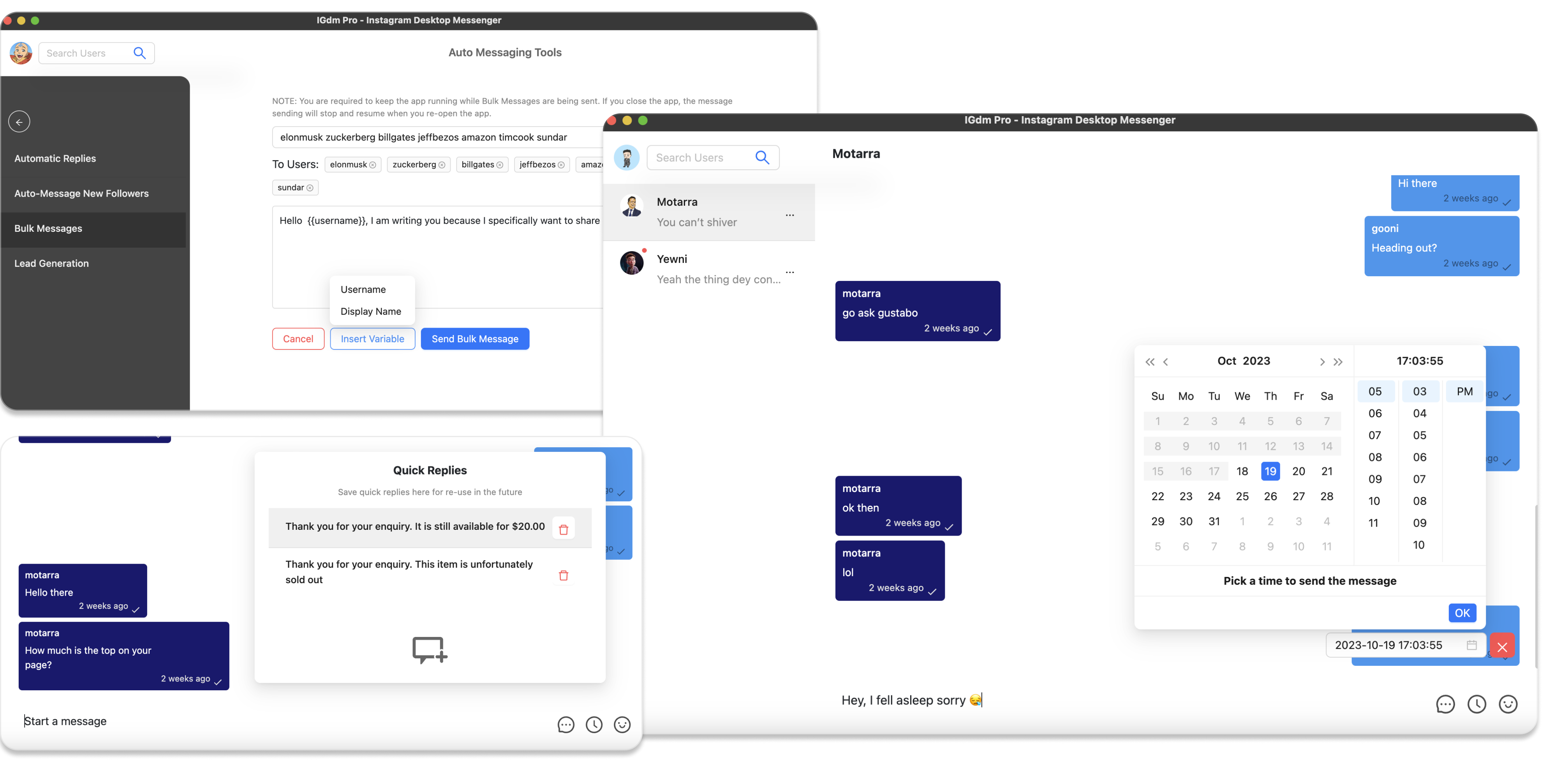How to Conduct Competitor Analysis on Instagram for Clients
As an Instagram marketing manager or agency, providing top-tier service means going beyond just posting content for your clients. A crucial part of any successful strategy is understanding the competitive landscape. Conducting a thorough competitor analysis on Instagram can uncover valuable insights, identify opportunities, and help you craft a strategy that truly stands out. This guide will walk you through the essential steps to conduct a comprehensive Instagram competitor analysis for your clients.
Table of Contents
- Why Competitor Analysis is Crucial
- Step 1: Identify Your Client's Key Competitors
- Step 2: Analyze Competitor Profiles and Bios
- Step 3: Dissect Their Content Strategy
- Step 4: Evaluate Audience and Engagement
- Step 5: Uncover Hashtag and SEO Tactics
- Streamlining Your Analysis with Powerful Tools
- Step 6: Presenting Your Findings to the Client
- Conclusion
Why Competitor Analysis is Crucial
A competitor analysis provides a clear picture of what’s working (and what’s not) in your client's niche. It helps you:
- Benchmark Performance: Understand where your client stands in relation to their competitors.
- Identify Opportunities: Discover content gaps, underutilized strategies, or emerging trends you can capitalize on.
- Refine Content Strategy: Learn what type of content resonates with the target audience.
- Set Realistic Goals: Base your client's KPIs on real-world data from their industry.
Step 1: Identify Your Client's Key Competitors
Start by identifying 3-5 direct and indirect competitors.
- Direct Competitors: Businesses that offer the same products or services to the same target audience.
- Indirect Competitors: Businesses that solve the same problem for the target audience but with a different solution.
You can find competitors by searching for relevant keywords and hashtags on Instagram, or by using Google to find businesses in your client's industry.
Step 2: Analyze Competitor Profiles and Bios
A competitor's profile is a goldmine of information. Look at:
- Username and Profile Name: Are they using keywords in their name for better searchability?
- Bio: How do they describe themselves? What is their value proposition?
- Call-to-Action (CTA): What action are they encouraging users to take?
- Link in Bio: Where are they directing their traffic?
Step 3: Dissect Their Content Strategy
This is where you'll spend the bulk of your time. Analyze their content from the last 30-90 days.
- Content Pillars: What are the main themes or topics they post about?
- Content Formats: What is their mix of Reels, Carousels, single images, and Stories?
- Posting Frequency: How often do they post?
- Visual Aesthetic: What is their brand's visual identity? Is it consistent?
- Caption Quality: What is their brand voice? Are their captions engaging and do they include CTAs?
Step 4: Evaluate Audience and Engagement
- Follower Count: While a vanity metric, it provides a general sense of their audience size.
- Engagement Rate: Calculate their average engagement rate (likes + comments / followers). This is a much better indicator of a healthy, engaged community.
- Audience Quality: Skim through their followers and the comments on their posts. Are they attracting their target audience? Are the comments genuine or spammy?
Step 5: Uncover Hashtag and SEO Tactics
- Hashtag Strategy: What hashtags are they using? Are they using a mix of broad and niche hashtags?
- Keyword Usage: Are they using relevant keywords in their captions and bio to improve their visibility in Instagram search?
Streamlining Your Analysis with Powerful Tools
Manually gathering all this data can be incredibly time-consuming, especially when analyzing follower lists and engagement. This is where automation tools can be a huge asset. A powerful desktop application like IGdm Pro can help you dig deeper, faster.
With IGdm Pro's Lead Generation features, you can:
- Extract Follower and Engager Lists: Export the follower list of a competitor's account, or extract the users who have liked or commented on their specific posts. This allows you to perform a much more in-depth analysis of their audience demographics and engagement quality than you could manually.
- Identify Potential Leads for Your Client: The lists you extract can also serve as a starting point for your client's own outreach and lead generation efforts.
By automating the data extraction process, you can focus your time on what really matters: analyzing the data and developing a winning strategy for your client.
Step 6: Presenting Your Findings to the Client
Once your analysis is complete, compile your findings into a clear and professional report.
- Use Visuals: Include screenshots, charts, and graphs to make the data easy to understand.
- SWOT Analysis: Frame your findings in a SWOT (Strengths, Weaknesses, Opportunities, Threats) analysis for each competitor.
- Provide Actionable Recommendations: This is the most important part. Based on your findings, provide clear, actionable recommendations for your client's Instagram strategy.
Conclusion
A thorough Instagram competitor analysis is a powerful tool that can give your client a significant edge. By systematically reviewing what your competitors are doing, you can identify opportunities, refine your strategy, and deliver better results.
And by leveraging smart tools to streamline the data-gathering process, you can work more efficiently and focus on providing the strategic insights that your clients value most.
